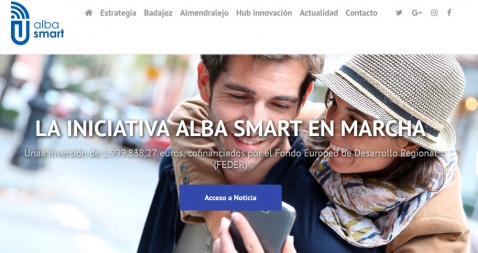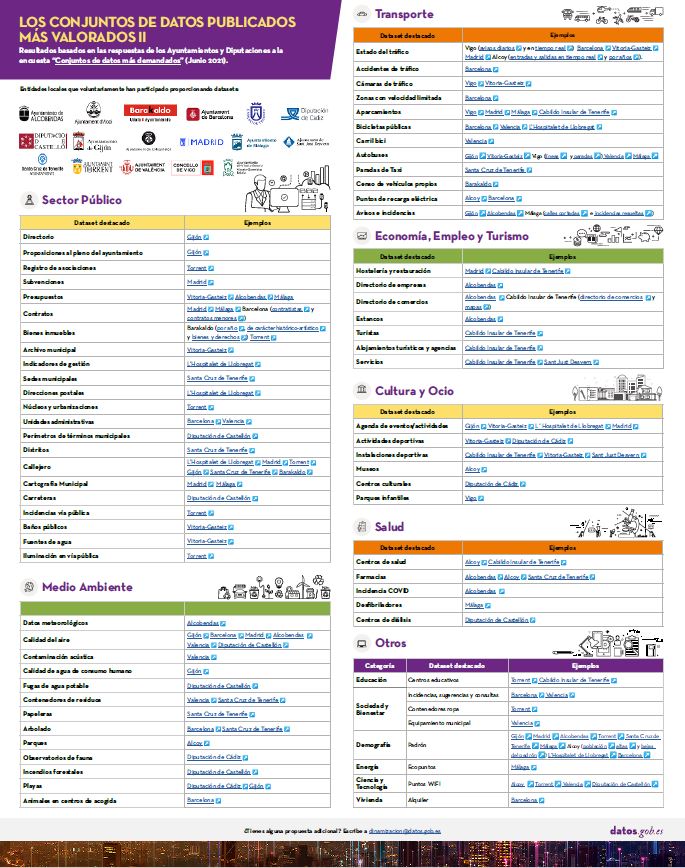Alba Smart: developing relevant content to drive open data
Fecha de la noticia: 05-05-2022

When launching an open data initiative, it is necessary that everyone involved in its development is aware of the benefits of open data, and that they are clear about the processes and workflows needed to achieve the goals. This is the only way to achieve an initiative with up-to-date data that meets the necessary quality parameters.
This idea was clear to the Alba Smart Initiative, which is why they have created various materials that not only serve to provide knowledge to all those involved, but also to motivate and raise awareness among heads of service and councillors about the need (and obligation) to publish as much information as possible for the use of citizens.
What is Alba Smart?
The Alba Smart project is jointly developed by the city councils of Almendralejo and Badajoz with the aim of advancing in their development as smart cities. Among the areas covered are the control of tourist mobility flows, the creation of an innovation hub, the installation of wifi access points in public buildings, the implementation of social wifi and the management of car parks and fleets.
Within the framework of this project, a platform has been developed to unify the information of devices and systems, thus facilitating the management of public services in a more efficient way. Alba Smart also incorporates a balanced scorecard, as well as an open data portal for each city council (Almendralejo's and Badajoz's are available here).
The Alba Smart initiative has the collaboration of Red.es through the National Plan for Smart Cities.
Activities to promote open data
Within the context of Alba Smart, there is an Open Data working group of the Badajoz City Council, which has launched several activities focused on the dissemination of open data in the framework of a local entity.
One of the first actions they have carried out is the creation of an internal WIKI in which they have been documenting all the materials that have been useful to them. This WIKI facilitates the sharing of internal content, so that all users have at their disposal materials of interest to answer questions such as: what is open data, what roles, tasks and processes are involved, why is it necessary to adopt this type of policies, etc.
In addition, on the public part of the Badajoz website, both Transparency and Open Data have shared a series of documents included in this WIKI that may also be of interest to other local initiatives:
Contents related to Transparency
The website includes a summary section with content on TRANSPARENCY. Among other issues, it includes a list of ITA2017 indicators and their assignment to each City Council Service.
This section also includes the regulatory framework that applies to the territory, as well as external references.
Content related to open data
It also includes a summary section on OPEN DATA, which includes the regulations to be applied and links of interest, in addition to:
- The list of 40 datasets recommended by the FEMP in 2019. This document includes a series of datasets that should be published by all local authorities in Spain in order to standardise the publication of open data and facilitate its management. The list generated by Alba Smart includes information on the local council service responsible for opening each dataset.
- A summary of the implementation plan followed by the council, which includes the workflow to be followed, emphasising the need for it to be carried out continuously: identifying new sources of information, reviewing internal processes, etc.
- A series of training videos, produced in-house, to assist colleagues in the preparation and publication of data. They include tutorials on how to organise data, how to catalogue data, and the review and approval process, among others.
- A (sample) manual on how to upload a file to their open data platform, which is developed with CKAN. It is a practical document, with screenshots, showing the whole process step by step.
- The list of vocabularies they use as a reference, which allow to systematically organise, categorise and tag information.
Among its next steps is the presentation of the datasets in the map viewer of the municipality. Data from the portal is already being fed into the corporate GIS to facilitate this function in the future.
All these actions are intended to ensure the sustainability of the portal, facilitating its continuous updating by a team with clear working procedures.














